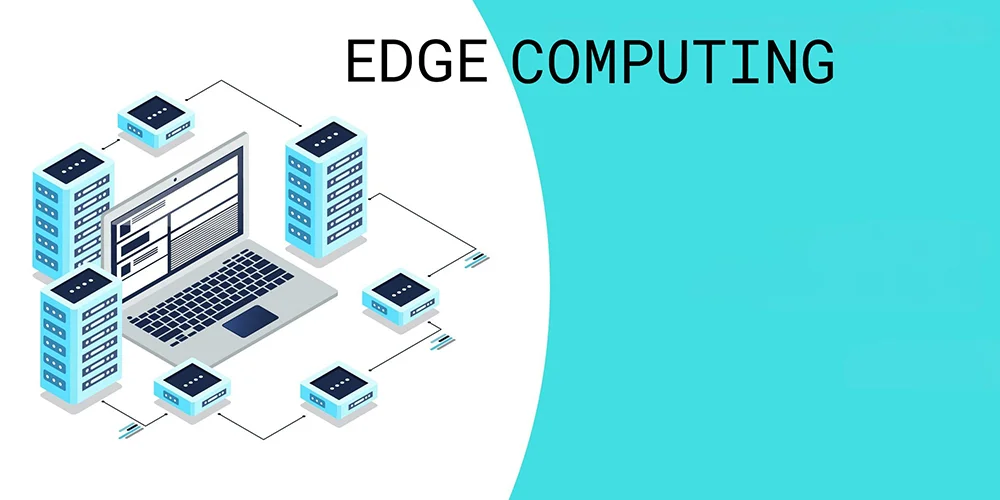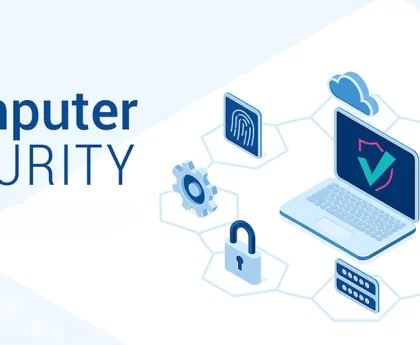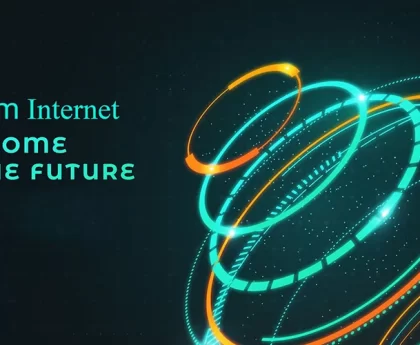Edge Computing: Powering the Next Generation of Connectivity is a distributed computing paradigm that brings data processing and computation closer to the data source or “edge” of the network, rather than relying solely on centralized cloud servers. In edge computing, data is processed and analyzed locally on devices or within local data centers, typically located near the location where the data is generated. This approach reduces latency, improves response times, and enhances overall system performance for applications and services that require real-time or low-latency processing.
History Of Edge Computing
Edge computing is a concept that has evolved over the past few decades in response to the growing need for faster, more efficient, and decentralized data processing.
Here is a brief history of edge computing:
- Early Computer Networking (1960s-1980s): The history of edge computing can be traced back to the early days of computer networking when the first rudimentary networks were developed. These networks connected mainframe computers to remote terminals, allowing for distributed computing, but the processing was still centralized.
- Client-Server Model (1980s-1990s): The advent of the client-server model in the 1980s marked a shift towards decentralized processing. Instead of relying solely on mainframes, organizations began using servers to distribute computing tasks across networks. This model improved efficiency but was still relatively centralized.
- Proliferation of Personal Computers (1980s-1990s): The widespread adoption of personal computers during this period brought computing power closer to individual users, creating a more distributed form of processing. However, the internet was in its infancy, and data was still primarily stored and processed in data centers.
- Mobile Devices and IoT (2000s): The proliferation of mobile devices, such as smartphones and tablets, marked a significant step towards edge computing. These devices had powerful processing capabilities, enabling local data processing and reducing the need for constant data transfer to centralized servers. Additionally, the rise of the Internet of Things (IoT) brought computing power to a wide range of devices at the edge of networks.
- Cloud Computing (2000s-2010s): Cloud computing emerged as a dominant paradigm, providing scalable and centralized computing resources over the internet. While cloud computing offered numerous benefits, it also introduced challenges related to latency and bandwidth, particularly for applications requiring real-time processing.
- Edge Computing Emergence (2010s): The need for low-latency, high-speed data processing led to the development of edge computing. This paradigm brings computing resources closer to the data source, reducing the time it takes for data to travel from the source to a centralized data center and back. Edge computing is particularly relevant for applications like autonomous vehicles, industrial automation, and augmented reality.
- Edge Computing Ecosystem (2010s-Present): In recent years, edge computing has evolved into a diverse ecosystem involving a range of technologies, including edge servers, edge gateways, and edge devices. Edge computing solutions vary from small, localized setups to more extensive, distributed edge networks. Companies and organizations are increasingly adopting edge computing to meet the demands of data-intensive and low-latency applications.
- Continued Growth and Innovation (Present and Future): Edge computing continues to evolve, driven by advances in hardware, networking, and software technologies. As 5G networks become more widespread and devices become more capable, edge computing’s role in enabling real-time data processing, analytics, and decision-making is expected to grow significantly.
In summary, edge computing has its roots in the decentralization of computing power, with a gradual shift from centralized mainframes to distributed systems. It has become increasingly important in today’s data-driven world, where low-latency, high-performance computing at the edge is crucial for a wide range of applications. The history of edge computing reflects the ongoing quest for faster and more efficient ways to process data closer to where it’s generated.
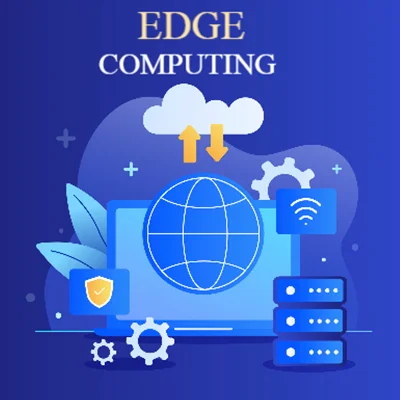
Types Of Edge Computing
Edge computing encompasses various types and architectures, each designed to meet specific requirements and use cases.
Here are some of the common types of edge computing:
- Fog Computing:
– Definition: Fog computing is an intermediate layer between edge devices and centralized cloud data centers. It extends cloud computing capabilities closer to the edge of the network.
– Use Cases: It’s ideal for applications requiring low-latency data processing and real-time analytics, such as industrial automation, smart cities, and connected vehicles. - Mobile Edge Computing (MEC):
– Definition: MEC, also known as Multi-access Edge Computing, brings computing resources closer to mobile users, typically at the base station or cell tower level.
– Use Cases: MEC enhances mobile network performance and supports applications like augmented reality, virtual reality, and content delivery. - Cloudlet Computing:
– Definition: Cloudlets are small-scale, localized cloud data centers deployed at the edge of the network. They provide computing resources for nearby devices.
– Use Cases: Cloudlets are used in scenarios where low latency is essential, such as mobile and IoT applications. - Industrial Edge Computing:
– Definition: Industrial edge computing focuses on processing data generated by industrial equipment and machinery at the edge of industrial networks.
– Use Cases: It is used in manufacturing, process automation, and predictive maintenance to optimize operations and reduce downtime. - Retail Edge Computing:
– Definition: Retail edge computing involves deploying edge devices and servers in retail locations to process data from point-of-sale systems, inventory management, and customer analytics.
– Use Cases: It enables real-time inventory management, personalized marketing, and improved customer experiences. - Autonomous Edge Computing:
– Definition: Autonomous edge computing refers to edge devices, such as autonomous vehicles and drones, that process data locally for decision-making.
– Use Cases: Autonomous vehicles, for example, rely on edge computing for rapid response to changing road conditions and traffic data. - Smart Grid Edge Computing:
– Definition: Smart grid edge computing involves processing data from sensors and devices in electrical grids to improve grid management and efficiency.
– Use Cases: It helps in load balancing, fault detection, and optimizing energy distribution. - Healthcare Edge Computing:
– Definition: Healthcare edge computing involves processing patient data at the edge to support remote monitoring, real-time diagnostics, and telemedicine.
– Use Cases: It enhances patient care, especially in situations where immediate medical attention is required. - Agricultural Edge Computing:
– Definition: Agricultural edge computing is used to analyze data from sensors, drones, and machinery to optimize farming operations and increase crop yield.
– Use Cases: It supports precision agriculture, crop monitoring, and automated farming processes. - Consumer Edge Devices:
– Definition: Consumer edge devices, such as smart speakers, wearables, and home automation systems, process data locally to provide faster responses and enhance user privacy.
– Use Cases: These devices improve user experiences and reduce the need for constant cloud connectivity.
These are just a few examples of the types of edge computing. Edge computing solutions can be highly customized to meet the specific requirements of different industries and applications, and they continue to evolve as technology advances and new use cases emerge.
Features Of Edge Computing
Edge computing offers several features and advantages that make it a compelling approach for certain applications and use cases.
Here are some of the key features of edge computing:
- Low Latency: Edge computing reduces data transmission time by processing data closer to its source. This low-latency processing is critical for applications that require real-time decision-making, such as autonomous vehicles, industrial automation, and augmented reality.
- Improved Performance: Edge devices can offload processing tasks from centralized data centers or cloud servers, leading to improved overall system performance. This is especially important for applications that demand high computational power.
- Bandwidth Efficiency: By processing data at the edge, only relevant information is transmitted to the cloud or data center, reducing the amount of data that needs to traverse the network. This minimizes bandwidth usage and associated costs.
- Privacy and Security: Edge computing can enhance data privacy and security because sensitive information can be processed locally without needing to be sent to a remote data center. This reduces the risk of data breaches during transit.
- Reliability: Distributed edge computing architectures can improve system reliability by reducing the impact of single points of failure. Even if one edge device or server fails, others can continue to operate independently.
- Scalability: Edge computing systems are designed to be scalable to accommodate growing workloads and the addition of new edge devices. This scalability allows for flexibility in deploying solutions.
- Offline Capabilities: Edge devices can continue to function and process data even when disconnected from the central cloud or data center, ensuring uninterrupted service in environments with unreliable or intermittent connectivity.
- Real-time Analytics: Edge computing enables real-time analytics and data processing, which is essential for applications like predictive maintenance, where immediate insights can prevent costly downtime.
- Customization: Edge computing solutions can be customized to meet the specific requirements of different industries and use cases. This flexibility allows organizations to tailor their edge infrastructure to their needs.
- Redundancy and Failover: Redundancy can be built into edge computing architectures to ensure high availability. In the event of a failure, edge devices or servers can seamlessly switch to backup resources.
- Energy Efficiency: Edge devices are often designed to be energy-efficient, making them suitable for remote and battery-powered applications. This is crucial for IoT deployments in remote areas.
- Compliance: Edge computing can help organizations comply with data sovereignty and regulatory requirements by keeping data within specific geographic regions or jurisdictions.
- Cost Savings: By reducing the amount of data sent to centralized data centers and optimizing network traffic, edge computing can result in cost savings for organizations in terms of bandwidth and cloud computing expenses.
- Elasticity: Edge computing resources can be dynamically allocated based on demand, allowing for efficient resource utilization and cost control.
- Interoperability: Edge computing solutions can often integrate with existing infrastructure and systems, ensuring compatibility with legacy technology investments.
These features make edge computing a valuable solution for a wide range of applications, especially those that require low latency, high availability, and efficient data processing at the edge of the network.
Benefits Of Edge Computing
Edge computing offers numerous benefits across various industries and use cases due to its ability to process data closer to the source.
Here are some of the key advantages and benefits of edge computing:
- Low Latency: Reduced data travel time leads to lower latency, which is crucial for real-time applications like autonomous vehicles, industrial automation, and virtual reality, where split-second decisions are required.
- Improved Performance: Edge devices can offload processing tasks from centralized data centers, leading to improved overall system performance and faster response times for applications.
- Bandwidth Efficiency: Edge computing reduces the volume of data that needs to be transmitted to centralized data centers or the cloud, optimizing bandwidth usage and lowering data transfer costs.
- Privacy and Security: Edge computing enhances data privacy and security by processing sensitive information locally. This reduces the risk of data breaches during data transmission to remote servers.
- Reliability: Distributed edge computing architectures reduce the impact of single points of failure. Even if one edge device or server fails, others can continue to operate independently, improving system reliability.
- Scalability: Edge computing systems are designed to be scalable, allowing organizations to add new edge devices and resources as needed to accommodate growing workloads.
- Offline Capabilities: Edge devices can continue to function and process data even when disconnected from the central cloud or data center, ensuring uninterrupted service in remote or intermittently connected environments.
- Real–time Analytics: Edge computing enables real-time data analytics and processing, which is essential for applications like predictive maintenance, where immediate insights can prevent costly downtime.
- Customization: Edge computing solutions can be tailored to meet specific industry or use case requirements, providing flexibility in designing and deploying solutions.
- Energy Efficiency: Edge devices are often designed to be energy-efficient, making them suitable for remote and battery-powered applications, such as IoT devices in remote areas.
- Cost Savings: By reducing data transfer to centralized data centers and optimizing network traffic, edge computing can lead to cost savings in terms of bandwidth and cloud computing expenses.
- Elasticity: Edge computing resources can be dynamically allocated based on demand, allowing for efficient resource utilization and cost control.
- Interoperability: Edge computing solutions can integrate with existing infrastructure and systems, ensuring compatibility with legacy technology investments.
- Compliance: Edge computing can help organizations comply with data sovereignty and regulatory requirements by keeping data within specific geographic regions or jurisdictions.
- Enhanced User Experience: Edge computing can deliver faster and more responsive user experiences in applications like gaming, video streaming, and augmented reality.
- Reduced Network Congestion: Edge computing can alleviate network congestion by processing data closer to the source, reducing the load on core networks and improving overall network performance.
- Local Decision–Making: Edge computing allows for local decision-making, which can be critical in scenarios where rapid responses are needed, such as in autonomous vehicles and robotics.
- Optimized Resource Utilization: Edge computing optimizes the use of computational resources, ensuring that tasks are performed where they make the most sense, which is particularly beneficial for resource-constrained environments.
These benefits make edge computing a valuable solution for a wide range of applications, industries, and scenarios where low latency, high availability, and efficient data processing at the edge of the network are essential.
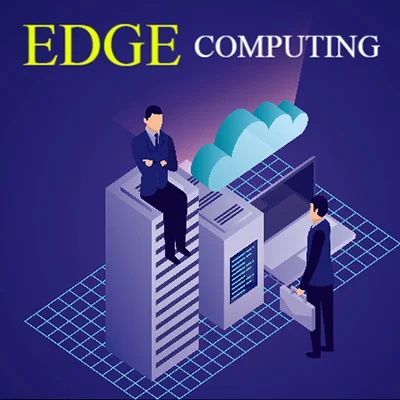
What is the main purpose of edge computing?
The main purpose of edge computing is to bring data processing and computation closer to the source of data generation, reducing latency and improving the efficiency of data-intensive applications. This paradigm shift from centralized cloud computing to decentralized.
Edge computing serves several key purposes:
- Low Latency: One of the primary purposes of edge computing is to minimize the time it takes for data to travel from its source to a computing resource and back. This low-latency processing is critical for applications that require real-time or near-real-time responses, such as autonomous vehicles, industrial automation, and augmented reality.
- Real-Time Decision-Making: Edge computing enables devices and systems to make decisions locally without relying on a remote cloud server. This is essential for scenarios where immediate responses are crucial for safety, efficiency, or user experience.
- Bandwidth Efficiency: By processing data locally at the edge, only relevant information or processed insights are transmitted to centralized data centers or the cloud. This reduces the volume of data that needs to traverse the network, optimizing bandwidth usage and reducing data transfer costs.
- Privacy and Security: Edge computing enhances data privacy and security by processing sensitive information at or near the data source. This reduces the risk of exposing sensitive data during transit to remote servers and enhances data sovereignty.
- Reliability: Distributed edge computing architectures improve system reliability by reducing the impact of single points of failure. Even if one edge device or server fails, others can continue to operate independently, enhancing overall system resilience.
- Scalability: Edge computing systems are designed to be scalable, allowing organizations to add new edge devices and resources as needed to accommodate growing workloads, making it adaptable to evolving needs.
- Offline Capabilities: Edge devices can continue to function and process data even when disconnected from the central cloud or data center, ensuring uninterrupted service in remote or intermittently connected environments.
- Customization: Edge computing solutions can be tailored to meet specific industry or use case requirements, providing flexibility in designing and deploying solutions that fit unique needs.
- Cost Savings: Edge computing can lead to cost savings by reducing data transfer costs and optimizing network traffic. It can also help in efficiently utilizing computing resources.
- Enhanced User Experience: For applications like gaming, video streaming, and augmented reality, edge computing delivers faster and more responsive user experiences by processing data closer to the end-user.
- Reduced Network Congestion: Edge computing can alleviate network congestion by processing data closer to the source, reducing the load on core networks and improving overall network performance.
In summary, the main purpose of edge computing is to enable efficient, low-latency, and real-time data processing and computation at or near the data source, addressing the needs of various applications, industries, and scenarios that demand immediate insights and rapid responses.
Is edge computing a software or hardware?
Edge computing encompasses both software and hardware components, and it is a distributed computing paradigm that relies on a combination of these elements to deliver its benefits.
Here’s how software and hardware play a role in edge computing:
Hardware:
- Edge Devices: These are physical computing devices located at or near the data source. They can include servers, gateways, routers, switches, sensors, cameras, drones, industrial machines, autonomous vehicles, and more. Edge devices are equipped with processing power, memory, and storage capabilities to perform data processing and computation locally.
- Edge Servers: In some edge computing setups, dedicated edge servers are deployed at the edge of the network to handle more substantial computational workloads. These servers are typically more powerful than edge devices and are used for applications that require significant processing capabilities.
- Edge Infrastructure: Edge infrastructure includes the physical equipment and networking components necessary to establish and maintain edge computing environments. This may include racks, enclosures, cooling systems, and specialized hardware for specific use cases.
Software:
- Edge Software Stack: Edge computing relies on software components, including operating systems, middleware, and application software, to enable data processing and computation on edge devices and servers. These software components are often designed to be lightweight and optimized for edge environments.
- Edge Management and Orchestration: Edge computing solutions also include software for managing and orchestrating edge devices and resources. This software facilitates tasks such as workload distribution, resource allocation, and remote management of edge nodes.
- Edge Analytics and AI: Edge computing often involves software for running analytics, machine learning, and artificial intelligence (AI) models locally on edge devices. These software components enable real-time insights and decision-making at the edge.
- Security and Data Encryption: Security software is crucial in edge computing to protect data and devices. Encryption, access control, and security protocols are implemented to ensure the confidentiality and integrity of data.
- Containerization and Virtualization: Technologies like containerization (e.g., Docker) and virtualization (e.g., VMware, KVM) are used to package and run applications and services in isolated environments on edge devices, simplifying deployment and management.
- Edge Development Frameworks: There are various development frameworks and tools available for building and deploying edge applications. These frameworks help developers create software that runs efficiently on edge hardware.
In summary, edge computing is a combination of both hardware and software components working together to enable localized data processing and computation. Hardware provides the physical infrastructure and processing power, while software manages, orchestrates, and executes tasks on edge devices and servers, making real-time, low-latency computing at the edge possible. The specific hardware and software components used in an edge computing solution can vary based on the application and use case.
Internet of Things: (IoT) Benefits & Building The Urban Future
Cloud Computing: Definition, Types, Scope, & Benefits

